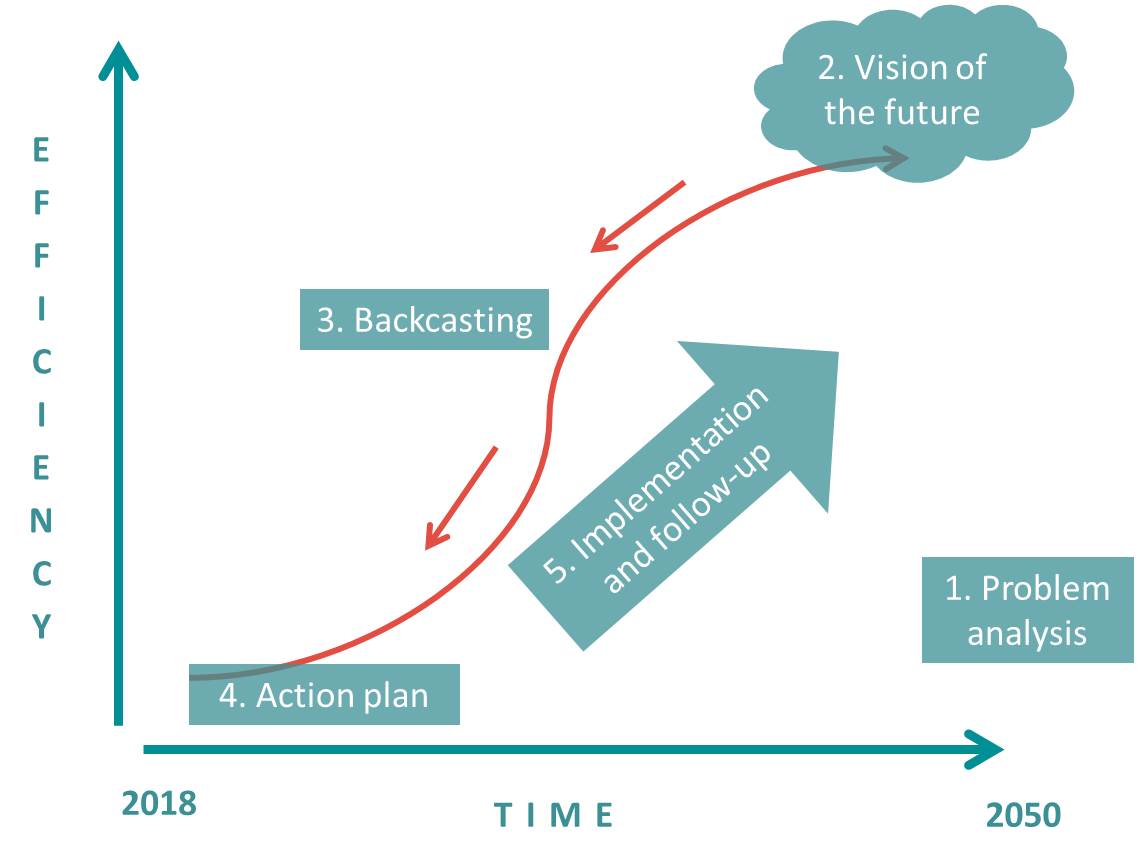Participatory backcasting

The overall work process, illustrated in the figure to the left, has five different stages. It starts with a problem analysis, focusing on the current situation and the associated sustainability challenges. The next step centers on the creation of a joint vision of the future. Once the future vision has been established, the changes required in order to bring about the desired future are outlined in the backcasting process. To initiate the change process, a more short-term action plan in line with the designed pathway is then created. In the final stage, the action plan is implemented and continuously evaluated and updated.
Who is this manual for?
What type of future do we want? How can we get there? The modular participatory backcasting framework, and hence this manual, can be a resource for anyone involved with a strategic planning project concerned with long-term change. It outlines 13 modules, each with its own objectives, guiding the user through the process of participatory backcasting – from the initial familiarisation with the problem and current situation, via the generation of a solution space to the creation of a pathway.
Regardless of whether the participatory backcasting approach is applied within small(er) scale or more comprehensive planning projects, a core aspect (as the name suggests) is the active involvement of stakeholders and the quest for consensus among the involved actors. In other words, anyone using the participatory backcasting framework will be engaging in a co-creation process that will bring with it unique challenges, but also opportunities to enable a more sustainable future.
As the context of every project is unique, it is not possible to state any specific requirements in terms of time or resources needed to implement a participatory backcasting project. However, a project team following the steps in this manual must be ready to plan for and carry through participatory elements, as well as to engage in some challenging but meaningful discussions.
Pilot
This manual was launched for the first time in early 2019. The content will be refined, updated and expanded upon continuously, and more elements will be added over time. We also welcome feedback so that the manual can be improved further.
Modules
Participatory backcasting is structured into 13 modules — from the initial familiarisation with the problem to the design of a pathway, action plan and follow-up measures.1. Problem orientation
Frame the problem to be solved
2. System boundaries
Identify system boundaries for associated socio-technical system
3. Current situation
How things run now
